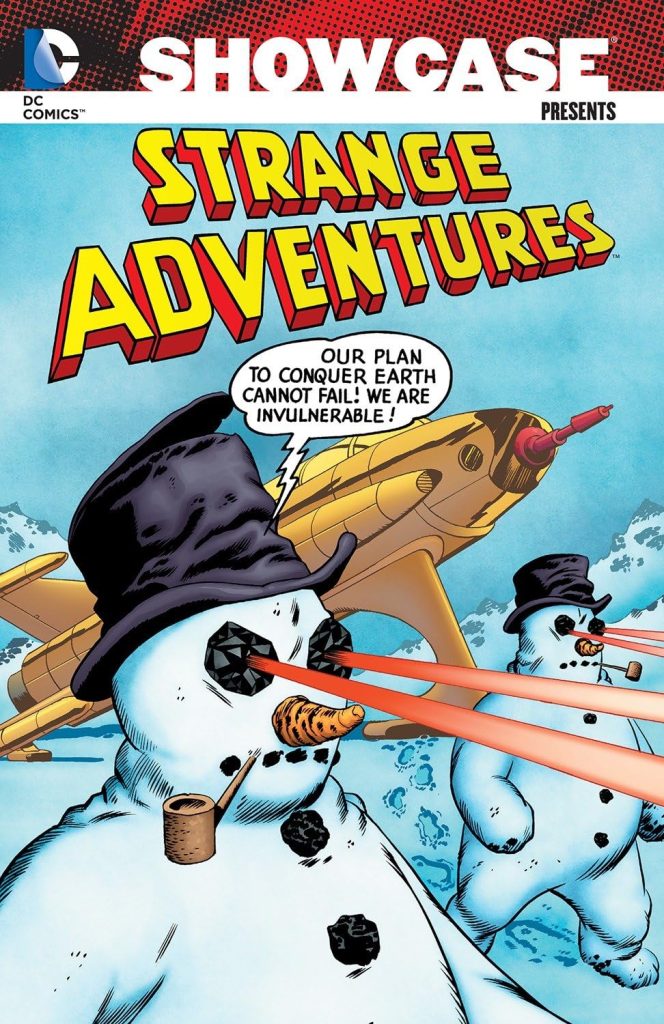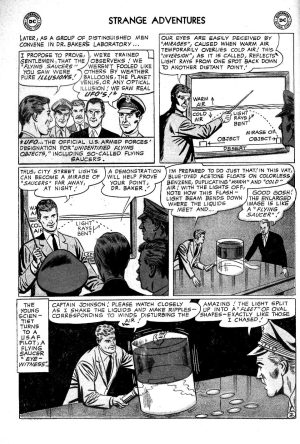Review by Win Wiacek
In 1950 SF comics escaped its glorious thud-&-blunder/ray guns/bikini babes in giant fishbowl helmets magazine roots with Julius Schwartz’s introduction of Strange Adventures. Packed with short adventures from jobbing SF writers and a plethora of new heroes, the magnificent monthly compendium introduced wide-eyed youngsters to a fantastic but intrinsically rationalist universe and the wonders it might conceal.
Volume 1 picked up in 1955 with DC on the cusp of reintroducing superheroes, and featured much of the talent that would spark the revival. This selection spans late 1956 to mid-1958 offering a backbone of fantastic fantasy plots and scenarios as an industry-wide resurgence of confidence and creativity gathered momentum and superheroes began to return. In this selection recurring characters begin to appear, such as Darwin Jones of the Department of Scientific Investigation, solving fringe or outright weird science dilemmas for the Federal Government.
His cases are written by Otto Binder, John Broome, Gardner Fox, but mostly Ed Herron, with art most commonly by Carmine Infantino. They collaborate on the genius-level scientific detective investigating ‘The Riddle of the Walking Robots’ in which robots wander around aimlessly sowing seeds and ‘The Gorilla War Against Earth’, which is self-explanatory. During this period editors were baffled by, but still exploited a bizarre truism: every issue of any title which featured gorillas on the cover always produced increased sales. Little wonder then that so many DC comics had hairy headliners, and they’re seen several times.
Miniaturised people are also frequently cover featured, and a signature DC technique was attention-grabbing covers featuring a situation evoking curiosity. To pick just three puzzlers by Binder and Infantino, why is a gorilla borrowing library books in ‘Secret of the Man-Ape’? What’s the scientific trick to escape jail being used by the man blowing shaped balloons in ‘The World That Slipped Out of Space’. How did a kid’s dad become a Martian? The covers are mind-blowing, physics-challenging invitations.
Couched in the grand tradition of legendary pulp sci-fi editor John Campbell, with human ingenuity and decency generally solving the assorted crises of cosmic interaction, these yarns and sagas are a timeless highpoint of all-ages comics entertainment.
If you dream in steel and plastic and are still wondering why you don’t yet own a personal jet-pack, this volume might go some way to assuaging that unquenchable fire for the stars.





